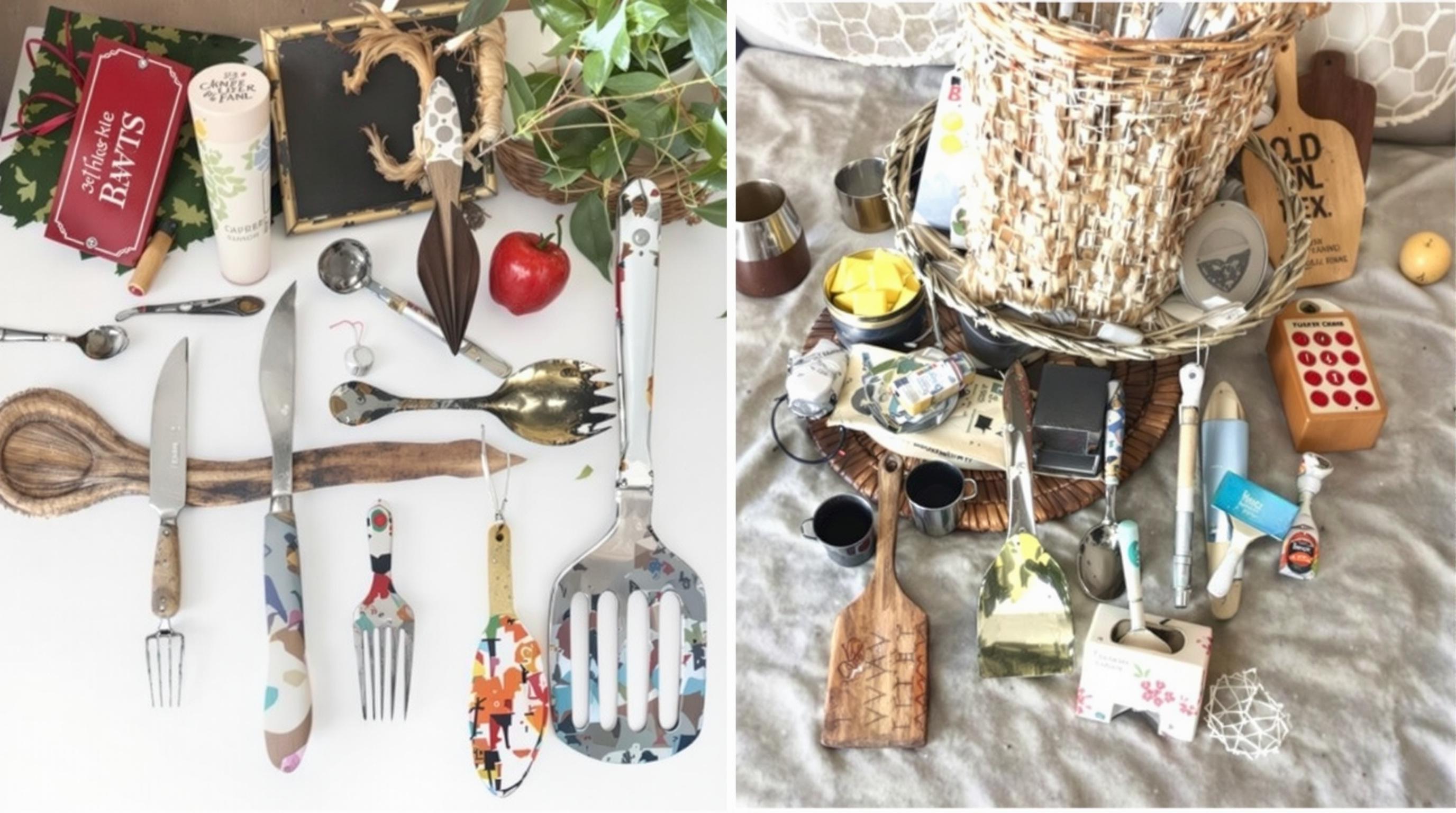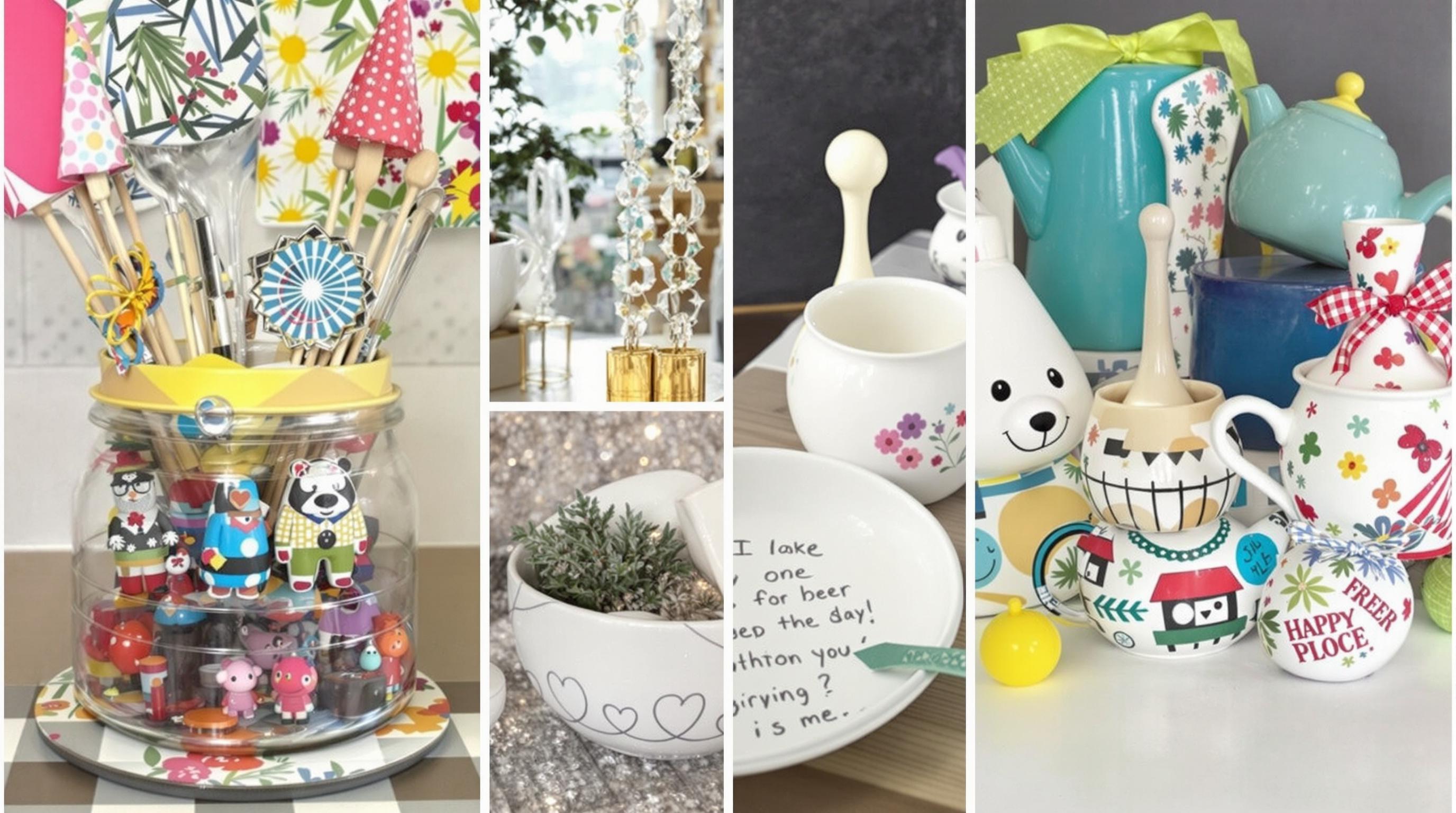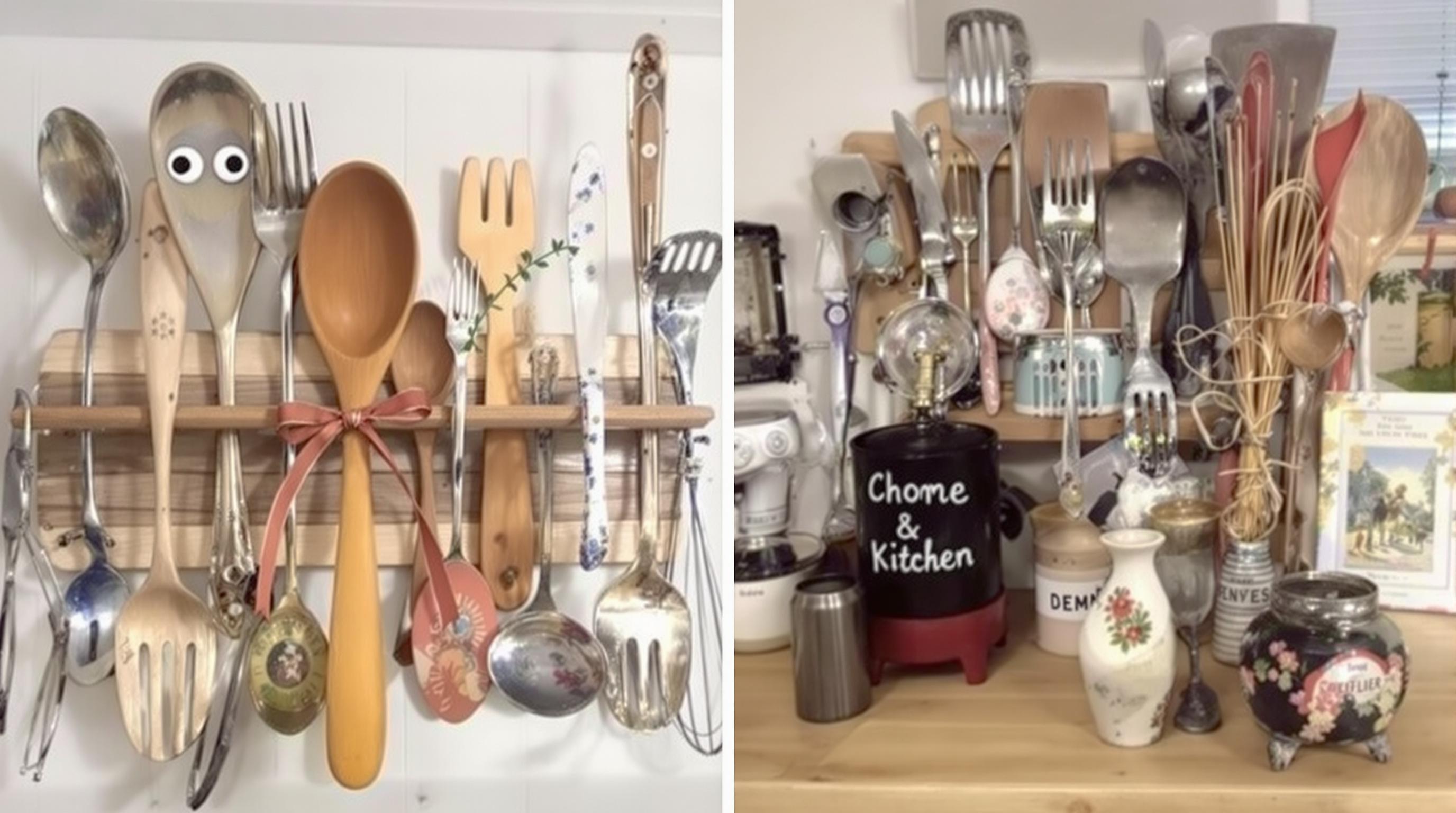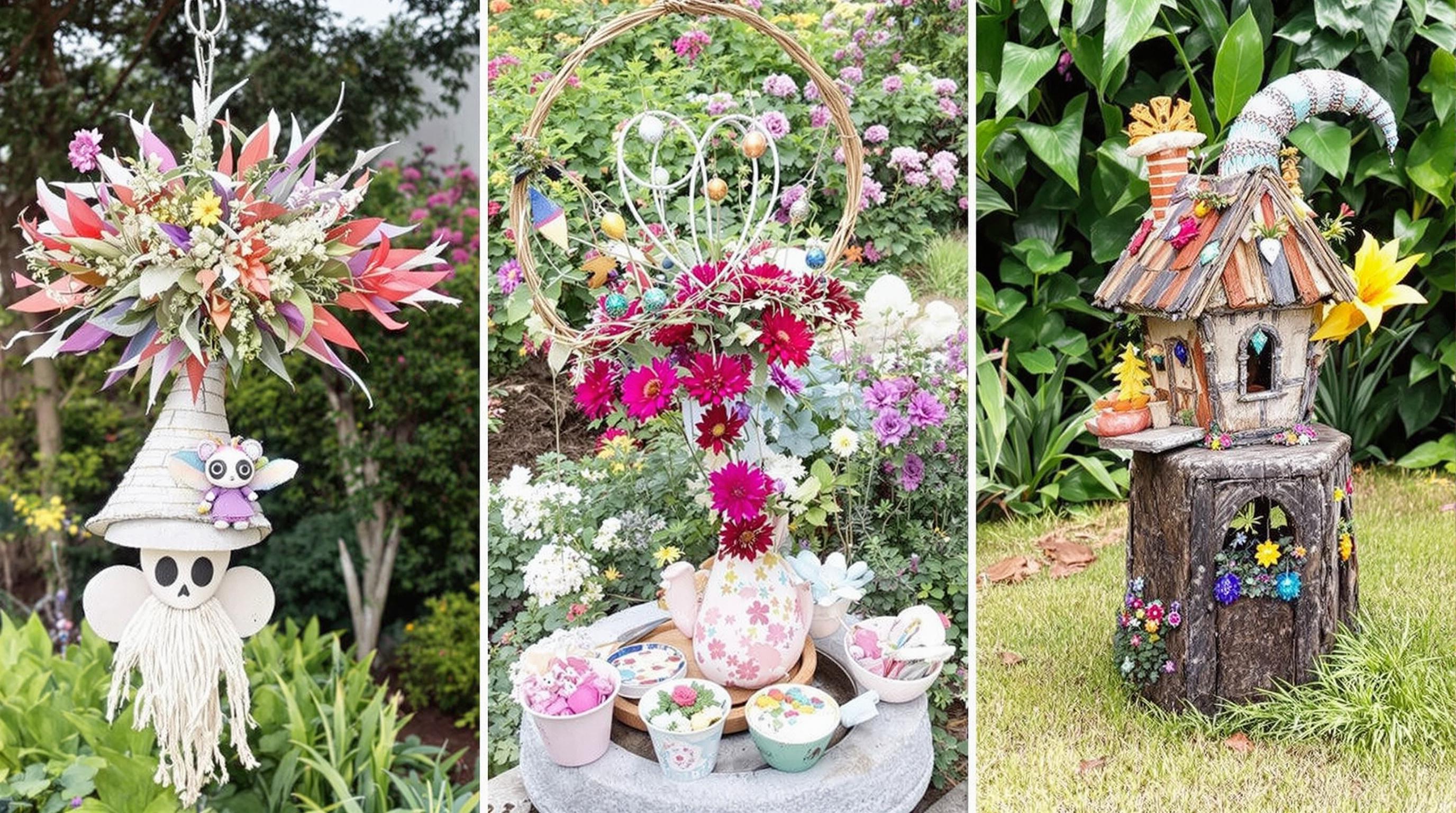Related Articles
- Bizarre Wonders: Crafting Functional Ornaments from Obsolete Household Gadgets and Oddities
- Eco-Chemistry: Innovative Projects Using Upcycled Materials from Your Kitchen for Sustainable Living
- Mystical Metamorphosis: Crafting Enchanted Home Decor from Unwanted Childhood Toys and Forgotten Doll Parts
- Color Cravings: Exploring the Unconventional Links Between Food Choices and Fashion Statements
- Hues of Controversy: The Surprising Ties Between Color Choices and Ethical Consumerism Trends
- Color Waves: Exploring the Impact of Music on Visual Aesthetics in Art and Fashion Choices
12 Innovative Upcycling Projects: Converting Discarded Kitchen Tools into Unique Art Pieces for a Culinary-Inspired Gallery
12 Innovative Upcycling Projects: Converting Discarded Kitchen Tools into Unique Art Pieces for a Culinary-Inspired Gallery
12 Innovative Upcycling Projects: Converting Discarded Kitchen Tools into Unique Art Pieces
Transforming discarded kitchen tools into art offers a sustainable solution to waste management while fostering creativity. Upcycling not only reduces the amount of waste that ends up in landfills but also breathes new life into items that might otherwise be overlooked. With a little imagination and craftsmanship, everyday kitchen tools can be reimagined as unique pieces of art that capture the essence of culinary inspiration. This gallery showcases twelve innovative upcycling projects, transforming the mundane into the extraordinary.
In the spirit of sustainability, the process of upcycling allows artists to explore their ingenuity and resourcefulness. By using materials that already exist, artists can create works that speak to both the beauty of repurposed items and the importance of ecological awareness. As society progresses towards greener practices, these projects demonstrate how art can correlate with a commitment to sustainability. Each piece serves as a conversation starter, encouraging viewers to reflect on the journey from kitchen tool to artistic expression.
This article will delve into twelve distinct projects that not only display creativity but also highlight the versatility of common kitchen items. From whisks to frying pans, the possibilities are endless. So, let’s explore these innovative works and find inspiration for our own culinary-inspired art endeavors!
1. Whisk Wreaths: A Festive Twist
One of the most charming ways to repurpose old whisks is by crafting whimsical wreaths. By weaving together a variety of whisks, artists can create vibrant and festive decorations for their kitchens or dining areas. These unique wreaths not only showcase creativity but also serve as a conversation piece during holiday gatherings.
To create a whisk wreath, gather several whisks and ensure a variety of sizes and materials. The whisks can be painted in different colors or left in their original metallic state for a more rustic look. Overlaying some faux flowers can add a cheerful charm, resembling a whimsical garden. Artists can personalize the wreaths by incorporating kitchen gadgets related to the home cook’s specialties.
The result is an eye-catching centerpiece that conveys both a love for cooking and a commitment to sustainability. Plus, whisk wreaths make great gifts for friends or family who appreciate culinary arts!
2. Colander Garden: A Unique Planter
Old colanders can take on a new life as quirky garden planters. With their decorative perforated design, colanders provide excellent drainage for plants, making them perfect for herbs or flowers. This project highlights how functional kitchen tools can easily transition to unconventional uses.
To create a colander garden, simply fill the colander with potting soil and choose your favorite herbs such as basil or parsley. To enhance their aesthetic appeal, artists can paint the colander in bright colors or apply decorative patterns. By hanging the colander using twine or wire, it can become a stunning vertical garden display that adds whimsy to any outdoor space.
This playful approach to gardening not only beautifies patios or kitchens but also encourages individuals to grow their own herbs, promoting a farm-to-table lifestyle. The colander garden exemplifies how upcycling can meld functionality with artistry!
3. Utensil Wall Art: A Culinary Installment
Crafting wall art with old utensils is an engaging way to enhance kitchen decor. By arranging forks, spoons, and knives into intricate designs, artists create stunning displays that lend a culinary atmosphere to any room. This project allows for both creativity and a means to showcase the history of these often-overlooked tools.
Artists can glue or weld utensils onto a wooden board or canvas, forming shapes such as hearts, trees, or even abstract patterns. An added layer of creativity can be achieved by painting utensils or using them in conjunction with other materials, such as fabric or glass. These creations can be displayed prominently in kitchens, dining rooms, or even art galleries that celebrate culinary arts.
This upcycling project not only benefits the environment but also celebrates the significance of shared meals and culinary traditions. It is a heartfelt homage to the role that kitchen utensils play in daily life.
4. Pot Lid Mirrors: Reflecting Style
Old pot lids can be transformed into stylish mirrors, further demonstrating how kitchen tools can attain a new artistic purpose. By framing mirrors with the circular shape of pot lids, artists create functional decor items that brighten up spaces while retaining a culinary charm.
To make this project, artists should first choose a mirror cut to fit inside the lid. The lid can be painted or adorned with mosaic tiles for a personal touch. By attaching a sturdy frame to the back, the pot lid mirror can be hung in various spaces, from kitchens to bathrooms. These mirrors bring an eclectic flair, serving both form and function.
Pot lid mirrors reflect not only the image but also the personality and culinary interests of the homeowners. Each piece can tell a unique story about the artistry of kitchenware, bridging gaps between utility and artistic expression.
5. Cutting Board Art: Canvas of Creativity
Repurposing old cutting boards as decorative canvases is another innovative upcycling project. With their sturdy surfaces, cutting boards can serve home decor or as functional art. This project allows artists to blend their culinary passion with creativity to make stunning, one-of-a-kind pieces.
Artists can paint, engrave, or decoupage designs onto cutting boards, transforming them into striking wall art. Inspirational quotes, botanical designs, or even family recipes can beautifully embellish cutting boards. Once completed, these pieces can be displayed in kitchens, dining rooms, or even galleries, showcasing an appreciation for both cooking and art.
Beyond aesthetics, these cutting board creations can also serve as delightful conversation starters, encouraging a dialogue about culinary heritage and the importance of sustainability. This project exemplifies how everyday items can be repurposed to inspire and connect people through art.
6. Bowl Bird Feeders: Nurturing Nature
Transforming old bowls into bird feeders is an eco-friendly project that merges artistry with nature. These delightful feeders attract feathered friends while showcasing the charm of upcycled kitchenware. This project promotes sustainability by repurposing items that may no longer be used in the kitchen.
To create a bowl bird feeder, artists can use an old ceramic or wooden bowl and attach it to a sturdy base or hanging mechanism. Filling it with birdseed creates a friendly habitat for birds in the backyard. Artists can further personalize the feeders by painting or attaching decorations like beads or ribbons, giving each feeder a unique character.
This project not only benefits wildlife but also enriches the outdoor experience for observers, creating an engaging environment to appreciate nature's beauty. Bird feeders serve as a reminder of the connection between art, sustainability, and the natural world.
7. Silverware Wind Chimes: Musical Whimsy
Old silverware can be elegantly transformed into whimsical wind chimes, offering a melodic addition to any outdoor space. This project showcases how discarded utensils can create beautiful sound compositions while avoiding waste. The tinkling sounds of silverware dancing in the breeze provide a serene atmosphere.
To make silverware wind chimes, artists can choose spoons and forks of varying lengths and attach them to a sturdy frame using fishing line or wire. Paint can be added for flair, and small decorative elements like beads or shells can enhance the visuals. The result is a charming assembly that produces gentle sounds and adds a unique touch to patios or gardens.
Not only do these wind chimes celebrate culinary heritage, but they also incorporate the natural elements of wind and sound, enriching the sensory experience of outdoor spaces. Silverware wind chimes epitomize the harmony between art and nature.
8. Measuring Cup Sculpture: A Culinary Statement
The possibilities of transforming measuring cups into striking sculptures are boundless. By stacking, welding, or arranging measuring cups and spoons in various ways, artists can create dynamic and abstract pieces that make bold statements about culinary arts. These sculptures highlight the functional yet artistic potential of kitchenware.
Artists can design sculptures that reflect themes of baking or cooking, perhaps capturing the essence of measuring ingredients in a playful format. Paint or metal finishes can elevate these pieces, allowing them to resonate with a wide range of styles ranging from contemporary to rustic.
Measuring cup sculptures not only serve as artworks but also symbolize the connection between culinary precision and creativity. This project encourages artists to push boundaries while crafting pieces that are both thought-provoking and visually appealing.
9. Tinfoil Sculptures: Into the Limelight
Though tinfoil may seem like a simple kitchen tool, it can be the foundation for imaginative sculptures. By molding and shaping tinfoil, artists can create whimsical characters or intricate designs that astonish viewers. This project highlights the flexibility of tinfoil, showcasing its potential beyond typical usage.
Artists can twist, bend, and layer tinfoil to create three-dimensional sculptures that represent food items, utensils, or even abstract forms. Adding paint or embellishments such as glitter can enhance the artistic expression, allowing for a range of styles from playful to elegant.
Tinfoil sculptures serve as a wonderful reminder of the creativity that can stem from even the most mundane kitchen items. These projects encourage exploration, innovation, and playful experimentation with materials often discarded in everyday life.
10. Egg Carton Art: A Whimsical Touch
Egg cartons, often seen as mere waste, can be cleverly transformed into delightful art pieces. Artists have the opportunity to create sculptures, wall hangings, or decorative items using the structure of egg cartons. This upcycling project fosters an imaginative spirit while promoting sustainability.
To make art from egg cartons, individuals can cut and shape the cartons into flowers, animals, or abstract designs. Paints or fabrics can be applied for added color and texture, allowing for diverse creative expressions. Once completed, egg carton art can add a playful, vibrant touch to any environment.
This project emphasizes the idea that creativity knows no bounds—everyday items can be sources of inspiration and artistic exploration. Egg carton art showcases how imaginative design can arise from items that are commonly discarded.
Conclusion
The twelve innovative upcycling projects explored in this article showcase the artistic potential of transforming discarded kitchen tools into unique art pieces. Each project not only promotes sustainability but also encourages creativity and resourcefulness, inviting artists and enthusiasts alike to view ordinary kitchen items through a new lens.
Through these engaging endeavors, artists foster a dialogue about culinary arts and the importance of environmental consciousness, reiterating that art does not have to be created from new materials alone. Instead, it can emerge from the stories and functions of what exists, including the forgotten remnants of our kitchens.
Ultimately, the journey of upcycling is one filled with inspiration, creativity, and an ecological commitment to repurposing. As these projects remind us, the potential for unique artistic expression lies waiting in the most unexpected places, hidden in our discarded kitchen tools.




